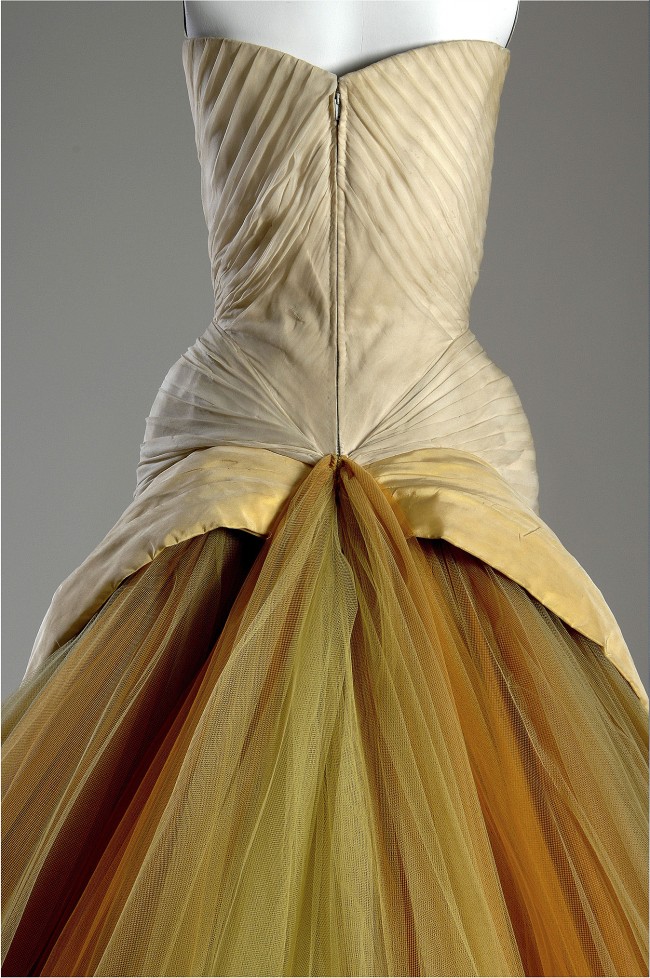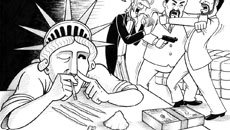
Illustration by Matt Lane
Disney’s most recent attempt to “get it right” with 2009’s The Princess and the Frog
In 2006, directly after their acquisition of Pixar, Disney’s animation department declared their intentions to return to traditional 2D animation. Set to release Christmas Day, 2009, The Princess and the Frog will be Disney’s first feature-length animated production since 2004’s Home on the Range, as well as its first Broadway-style musical since Mulan in 1998. Additionally, this will be the first time Disney has made a film that has taken place in a specific US city. And last, but certainly not least, this will be the first time Disney has presented its audience with an African-American princess.
Needless to say, the hype and hysteria surrounding this film began the second Disney announced in 2007 that it was planning to make a new animated classic, called The Frog Princess, about a black chambermaid in New Orleans, circa 1920 (the Jazz Age). A slew of negative press and unhappy Mouseketeers expressed their concerns that the title established a linguistic relationship between the first black princess and a frog, leading Disney to re-title the film The Princess and the Frog in order to deflect the negative connotations.
But the controversy did not stop there. Just Google “the princess and the frog” and you will get thousands of blogs either praising Disney for finally creating a princess for black girls, or vehemently accusing Disney for overt racist and sexist content in the new film. Well, Disney… it seems to me that you are damned if you do, damned if you don’t.
But let’s really think about this… If we are going to appraise the value of this new film, perhaps we should do it within the context of all other Disney animated “classics,” starting with the very first: Snow White and the Seven Dwarves. We have young Snow White, banished from the castle to become the maid to seven men… exactly. Like Cinderella and Princess Aurora (Sleeping Beauty), her beauty is both the source of her disenfranchisement as well as the cause of her “Happily Ever After.”
Take into account the premise of almost any fairy tale you’ve ever heard and the fact that many of these stories are derived from sources ranging from Mother Goose to the Brothers Grimm to Aesop’s Fables, Disney didn’t come up with this beautiful-naive-girl-made-to-live-in-squalor-only-until-she-can-be-rescued-by-a-prince trope out of thin air. However, pay close heed to the word “derived”: their editing and pairing down of these orginally complex tales (Disneyfication, I believe it is called), have bought into a particularly simplified portrayal of female (non)protagonists.
Then of course, there is the issue of political correctness regarding race. I think it is safe to say that when it comes to Disney we are dealing with stereotypical representations for the masses. (Do we even need to give you examples here?)
So, if we all know and can attest to Disney’s ceaseless onslaught of racist, sexist, classist and elitist assumptions played out in magical colors with a “Happily Ever After” tagline, why are we so shocked at Mama Odie, the good voodoo priestess of the Bayou, or that the princess was originally named Maddy (short for the French Madeleine)? Actually, the outrage seems to have only been over the princess’s “slave name,” which led Disney to change it to Tiana. Is this fixated outrage because, unlike the voodoo priestess (or the hyenas and “Injun” faces of past movies), she will become the next iconic Disney Princess: Halloween 2010’s most sought after costume?
Personally, I think, it would be great to see a Disney film where the princess found “Happily Ever After” in a satisfying job and a close social network of friends and family instead of in the ever elusive Prince Charming who, in the end, probably divorces her for her younger version. But—despite Mulan’s heroic attempt—The Princess and the Frog makes it seem as though we aren’t ready to give up the “dream” quite yet (although, to be fair, Princess Tiana does encounter her own transformation into a frog and a perilous journey with her prince before she gets her rags to riches, magical kiss, and happy ending). I guess I’ll just have to get over Disney’s failure to deliver the full experience after the age of 12.
But let’s not ignore that they’ve at least made an effort: kudos to Disney for its recent committed attempt to extricate itself from the Eurocentric fairy tales of old, and embrace sources such as Arabian Nights and Chinese legend in order to create international princesses. However, this one seems like a reversion: adapted from “The Frog Prince,” a German-Romanticist fairy tale, The Princess and the Frog attempts multiculturalism by arbitrarily relocating the action to a New Orleans Creole community for reasons that are entirely outside of the narrative’s needs. While the geographical flexibility is laudable, the seemingly random choice of location makes Disney look vaguely disingenuous, in a demagogic, pandering sort of way.
Interestingly, the comments posted online by parents of young African American girls have been, for the most part, positive. They feel that, finally—after years of watching their daughter’s dress up as “white” princesses—they will be offered a real chance to connect with this new heroine. It seems that these parents have come to expect the stereotype-laden, consumer-ready Disney films that cater to an audience less socially aware than many would like to admit. But hey, the movie does have Oprah’s stamp of approval (she is so gung-ho about the first African American Disney Princess that she’s playing Tiana’s mother).
Perhaps this begs the question: when do children see race? At what age do they connect their skin color with the skin color of their favorite cartoons? Will young African American girls truly relate on a deeper level to this black princess, or will it simply alert them to the fact that their past heroines weren’t truly “theirs”? But really, were there fewer Jasmines on Halloween of 1993 than Ariel’s in 1990? So, Mickey… hooray… good for you. Way to give the black girls a doll their mothers can identify with, and that they must settle for.








I’m doing a picture book on basic fairy tales that needs to be in french, I was just browsing through pictures when this one showed up. Then, of course, I just haaadd to read your whole blog . I must say, it was very well written and your concepts are straight on . Congrads’, but this probably doesn’t mean much from a simple girl who’s turning 14 in December . Also ; did you draw that ? Haha, its just that the official princesses are Jasmine, Snow White, Mulan, Tiana, Aurora, Cinderella, Phocohuntas, Belle, Arial,( sorry, i dont really wannalook up their spellings though (: ) and soon to be later this year Rapunzle . How was the Princess and the frog movie anyways- did you end up seeing it ? I might see if i can go with kids i babysit- because I’m kinda old to see it . I’m excited to see both new Disney movies, sorry for wasting your time though, – Alicia 😀